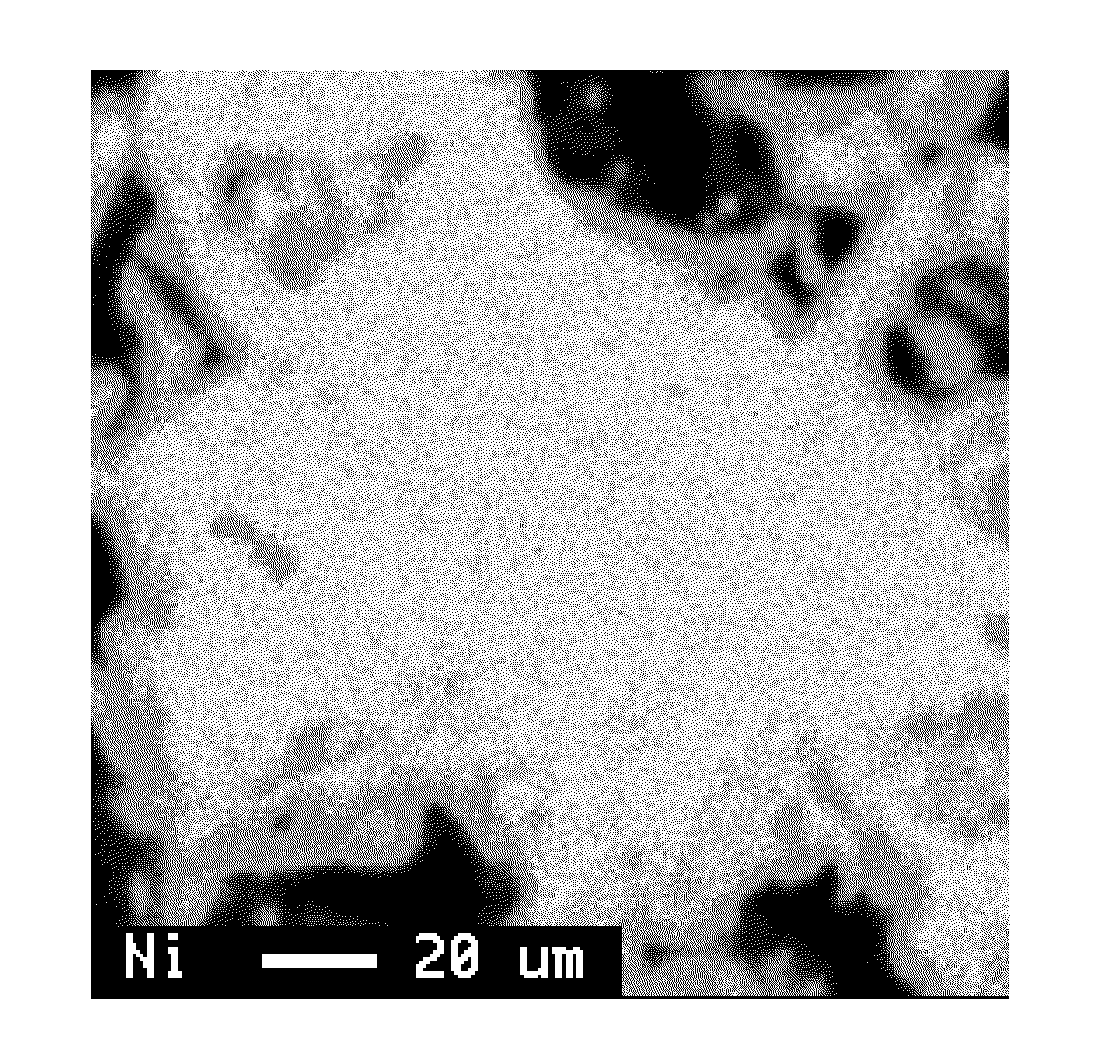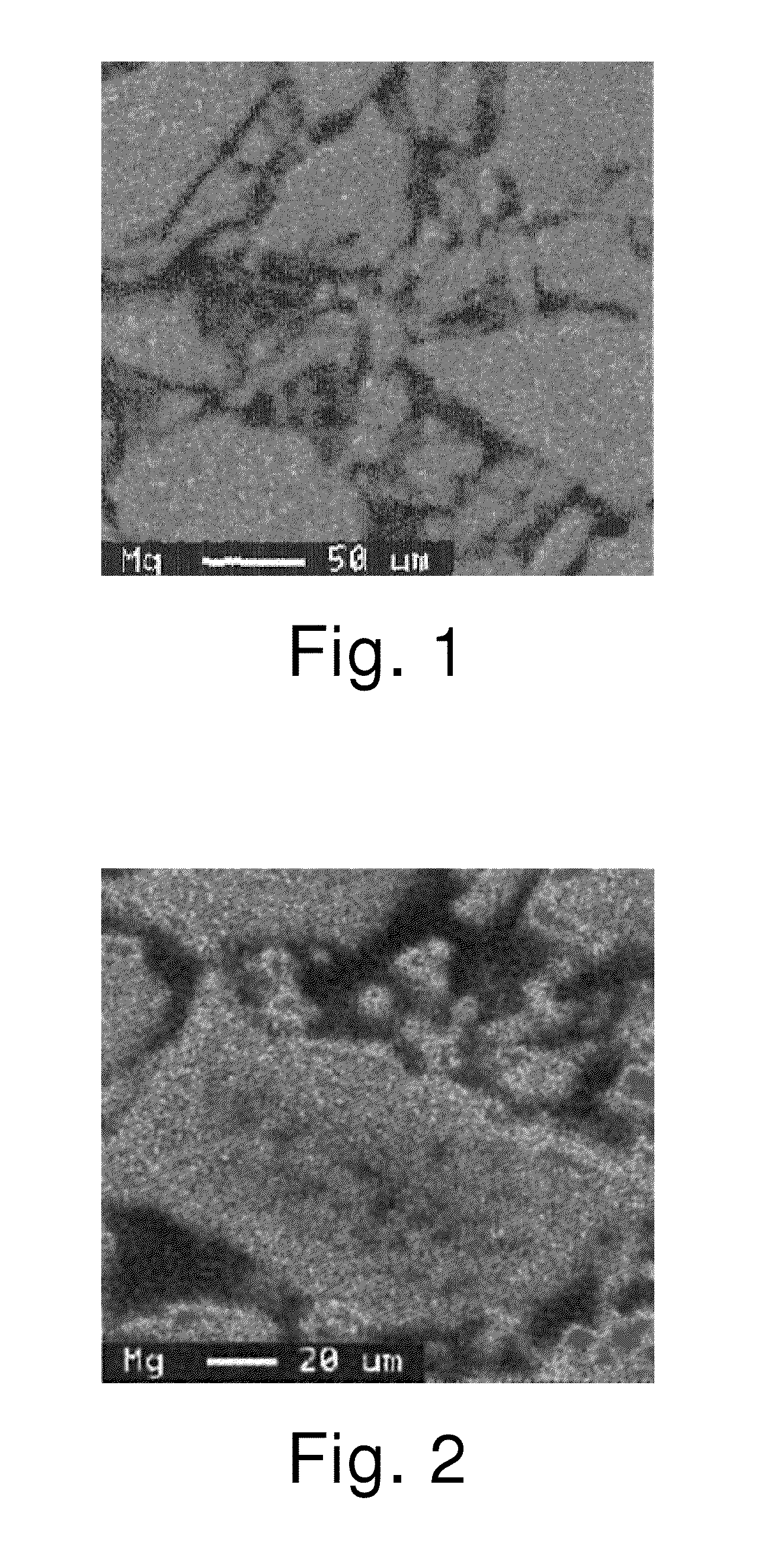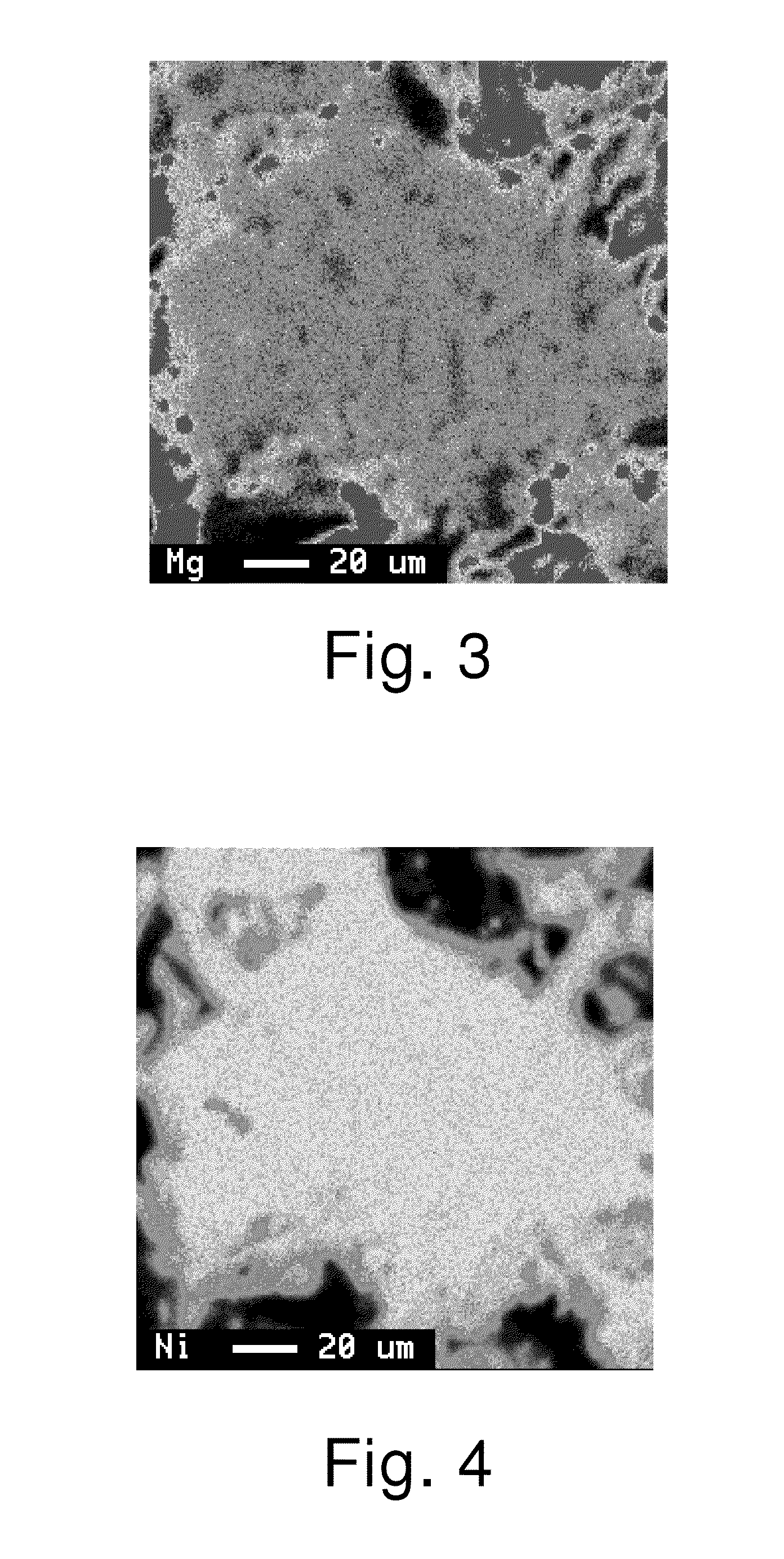Process for production of (rare earth)-mg-ni-based hydrogen storage alloy
- Summary
- Abstract
- Description
- Claims
- Application Information
AI Technical Summary
Benefits of technology
Problems solved by technology
Method used
Image
Examples
example 1
[0070]Starting materials other than Mg were measured out, and melted in a high-frequency melting furnace in an argon gas atmosphere into an alloy melt. The alloy melt was rapidly cooled and solidified by strip casting with a single-roll casting system having a water-cooled copper roll at a pouring temperature of 1400° C., into flakes having an average thickness of 0.4 mm. The obtained flakes were preliminarily pulverized in a ball mill into an alloy having a mean particle diameter (D50) of 75 μm. The composition of the obtained alloy was analyzed by ICP, and found to be La0.60Sm0.16Zr0.04Ni3.45Al0.10. The value of IA / IB=100 of the alloy determined by X-ray diffraction under the above-mentioned conditions was 50%.
[0071]The alloy obtained above was thoroughly mixed with Mg metal powder having a mean particle diameter (D50) of 110 μm in a mortar. The obtained mixture was held in an argon gas atmosphere at 700° C. for 30 minutes, and then at an elevated temperature of 920° C. for 24 hou...
example 2
[0078]An alloy without Mg was prepared in the same way as in Example 1 except that the composition of the starting materials was changed. The composition of the obtained alloy was analyzed by ICP and found to be La0.72Nd0.10Sm0.06Ni3.38Al0.10.
[0079]The obtained alloy was thoroughly mixed with Mg metal powder having a mean particle diameter (D50) of 110 μm in a mortar. The resulting mixture was held in an argon gas atmosphere at 700° C. for 30 minutes, and then at an elevated temperature of 940° C. for 12 hours. The composition of the obtained alloy was analyzed by ICP and found to be La0.72Nd0.10Sm0.06Mg0.12Ni3.38Al0.10. The yield of Mg was 99.5% The melting point of the obtained alloy was about 990° C.
[0080]The Mg elemental mapping image of this alloy is shown in FIG. 2. It is seen that Mg is present more in the surface layer than in the center part. The value of IA / IB×100 of the alloy without Mg and the results of evaluations of the battery characteristics determined in the same w...
example 3
[0081]An alloy without Mg was prepared in the same way as in Example 1 except that the composition of the starting materials was changed. The composition of the obtained alloy was analyzed by ICP and found to be La0.55Ce0.05Sm0.20Ni2.85Al0.15.
[0082]The obtained alloy was thoroughly mixed with Mg metal powder having a mean particle diameter (D50) of 110 μm in a mortar. The resulting mixture was held in an argon gas atmosphere at 700° C. for 30 minutes, and then at an elevated temperature of 940° C. for 12 hours. The composition of the obtained alloy was analyzed by ICP and found to be La0.55Ce0.05Sm0.20Mg0.20Ni2.85Al0.15. The yield of Mg was 100%. The melting point of the obtained alloy was about 950° C.
[0083]Observation with an EPMA revealed that Mg was uniformly distributed throughout the alloy. The value of IA / IB×100 of the alloy without Mg and the results of evaluations of the battery characteristics determined in the same way as in Example 1 are shown in Table 1.
PUM
| Property | Measurement | Unit |
|---|---|---|
| Temperature | aaaaa | aaaaa |
| Temperature | aaaaa | aaaaa |
| Fraction | aaaaa | aaaaa |
Abstract
Description
Claims
Application Information
 Login to view more
Login to view more - R&D Engineer
- R&D Manager
- IP Professional
- Industry Leading Data Capabilities
- Powerful AI technology
- Patent DNA Extraction
Browse by: Latest US Patents, China's latest patents, Technical Efficacy Thesaurus, Application Domain, Technology Topic.
© 2024 PatSnap. All rights reserved.Legal|Privacy policy|Modern Slavery Act Transparency Statement|Sitemap



